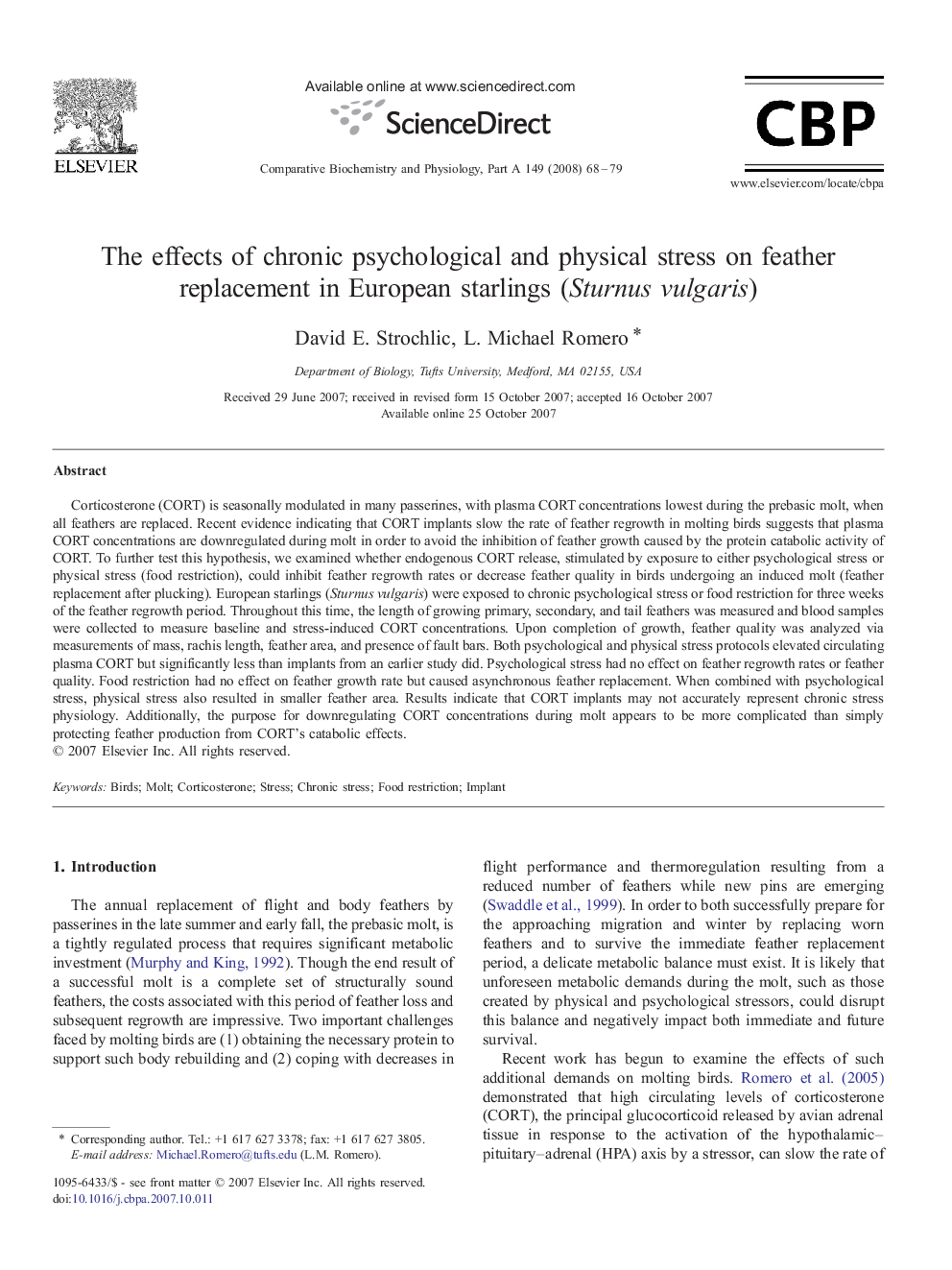| Article ID | Journal | Published Year | Pages | File Type |
|---|---|---|---|---|
| 1974235 | Comparative Biochemistry and Physiology Part A: Molecular & Integrative Physiology | 2008 | 12 Pages |
Corticosterone (CORT) is seasonally modulated in many passerines, with plasma CORT concentrations lowest during the prebasic molt, when all feathers are replaced. Recent evidence indicating that CORT implants slow the rate of feather regrowth in molting birds suggests that plasma CORT concentrations are downregulated during molt in order to avoid the inhibition of feather growth caused by the protein catabolic activity of CORT. To further test this hypothesis, we examined whether endogenous CORT release, stimulated by exposure to either psychological stress or physical stress (food restriction), could inhibit feather regrowth rates or decrease feather quality in birds undergoing an induced molt (feather replacement after plucking). European starlings (Sturnus vulgaris) were exposed to chronic psychological stress or food restriction for three weeks of the feather regrowth period. Throughout this time, the length of growing primary, secondary, and tail feathers was measured and blood samples were collected to measure baseline and stress-induced CORT concentrations. Upon completion of growth, feather quality was analyzed via measurements of mass, rachis length, feather area, and presence of fault bars. Both psychological and physical stress protocols elevated circulating plasma CORT but significantly less than implants from an earlier study did. Psychological stress had no effect on feather regrowth rates or feather quality. Food restriction had no effect on feather growth rate but caused asynchronous feather replacement. When combined with psychological stress, physical stress also resulted in smaller feather area. Results indicate that CORT implants may not accurately represent chronic stress physiology. Additionally, the purpose for downregulating CORT concentrations during molt appears to be more complicated than simply protecting feather production from CORT's catabolic effects.
